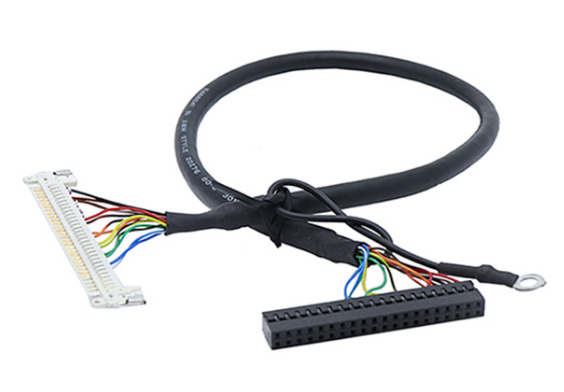If you were to compile a list of industries that depend heavily on modern technological advancements, healthcare and the medical sector would undoubtedly be at the top. A century ago, the concept of implantable medical devices was unimaginable. Today, they are so commonplace that we often overlook their significance. Cables and wire harnesses have played a crucial role in making these advancements possible. Therefore, it's essential to consider what the future holds to gain insight into the potential direction of the medical industry in the next decade and beyond.
What Are Some Future Cable Technologies To Be Used In The Medical Industry?
The promising future of cables and wire harnesses in the medical industry is not just about their capabilities but also about the advancements they will enable. Emerging cable technologies are poised to play a pivotal role in next-generation imaging systems, including more advanced and efficient MRI and CT scanners. These new systems will produce vast amounts of data essential for medical professionals to make well-informed health decisions. However, the challenge lies in transmitting and storing that information. This is where the importance of advanced cables comes into play, as they are crucial for handling the data flow required by these sophisticated medical devices.
Green Manufacturing Helps to Reduce Waste
The technology-dependent industries, including the medical field, have long grappled with waste management issues. Consider the scenario of purchasing cables for a patient monitoring system: new systems are typically bought every two years, leaving the old ones—along with their electronics, copper, and aluminum components—often discarded as waste despite their potential reusability.
This problem is significant because it contributes to the growing accumulation of PVC scrap in landfills. PVC, a prevalent jacket material for cables, can cause environmental harm when not properly disposed of. Reducing waste from such materials is crucial for environmental preservation and improving community quality of life.
Medical waste is a substantial part of the broader electronic waste problem. One of the most promising aspects of future advancements in cables and wire harnesses in the medical industry is their potential to promote greener, more environmentally friendly manufacturing practices. This shift can significantly reduce waste production.
Furthermore, the future of cables and wire harnesses in the medical industry involves recycling and reusing materials, particularly for single-use products. Currently, not all wire jacket materials are recyclable, but advancements could lead to high-quality, recyclable alternatives. These materials would produce less waste and enhance efficiency, addressing the waste challenges faced by the industry today.

Fewer Cables
In the short term, advancements in cable and wire harness technology will likely lead to a future where fewer cables are needed. The development of versatile solutions capable of achieving multiple objectives will reduce the demand for certain types of cables. Specifically, the need for multi-conductor data cables will diminish, as fewer data transmission cables become necessary.
The Internet of Things
One of the most significant benefits that the future of cable and wire harnesses in the medical industry will offer is their role in the burgeoning Internet of Things (IoT). The IoT encompasses a vast network of devices that continuously generate and exchange data. For example, when your smartwatch shares health data with your phone, which is then instantly transmitted to your medical provider, it exemplifies the IoT's transformative potential.
As medical devices integrated into the IoT ecosystem become more common, there will be an increasing need for high-speed data transmission. Bluetooth, Wi-Fi, and other emerging protocols will facilitate this rapid data transfer, with cables and wire harnesses playing a crucial role in supporting these connections.
Battery Technologies
One of the challenges with rechargeable batteries is the need for periodic recharging. In the future, advancements in battery technology will likely lead to devices requiring fewer power cords, providing greater convenience. Consequently, there will be less reliance on long power cable runs (ranging from 10 to 50 feet). Instead, many devices will be powered by lithium-ion-style batteries, necessitating their own dedicated charging systems. This shift will likely result in an increase in battery charging stations, which will also require specialized wire harnesses.
The Migration to USB-C
Another significant advancement in cable technology is the transition to USB-C as a standard interface. USB-C cables can transmit both power and data simultaneously, which is why modern smartphones can charge their batteries and transfer information from a computer using a single cable instead of multiple ones.
In the near future, many low-voltage devices, especially those in the medical industry, will be powered via USB-C. This shift will enable the development of longer-lasting and more efficient devices, making them invaluable for high-stakes applications.
Summary
The future of cable and wire harness technologies promises a myriad of benefits for the medical industry. These advancements offer increased reliability and come at significantly lower costs than current solutions. They also contribute to reduced waste, leading to a notable decrease in carbon emissions.
These technologies enable faster access to vast amounts of information and are made from more durable materials suitable for implantable or wearable applications. Additionally, they offer compact solutions that can be transported outside the examination room, making them versatile and practical. All these factors contribute to their rapid adoption as a preferred option in the industry.
If you'd like to learn more about the future of cables and wire harnesses in the medical industry, or if you have any additional questions, please don't hesitate to contact us today.
